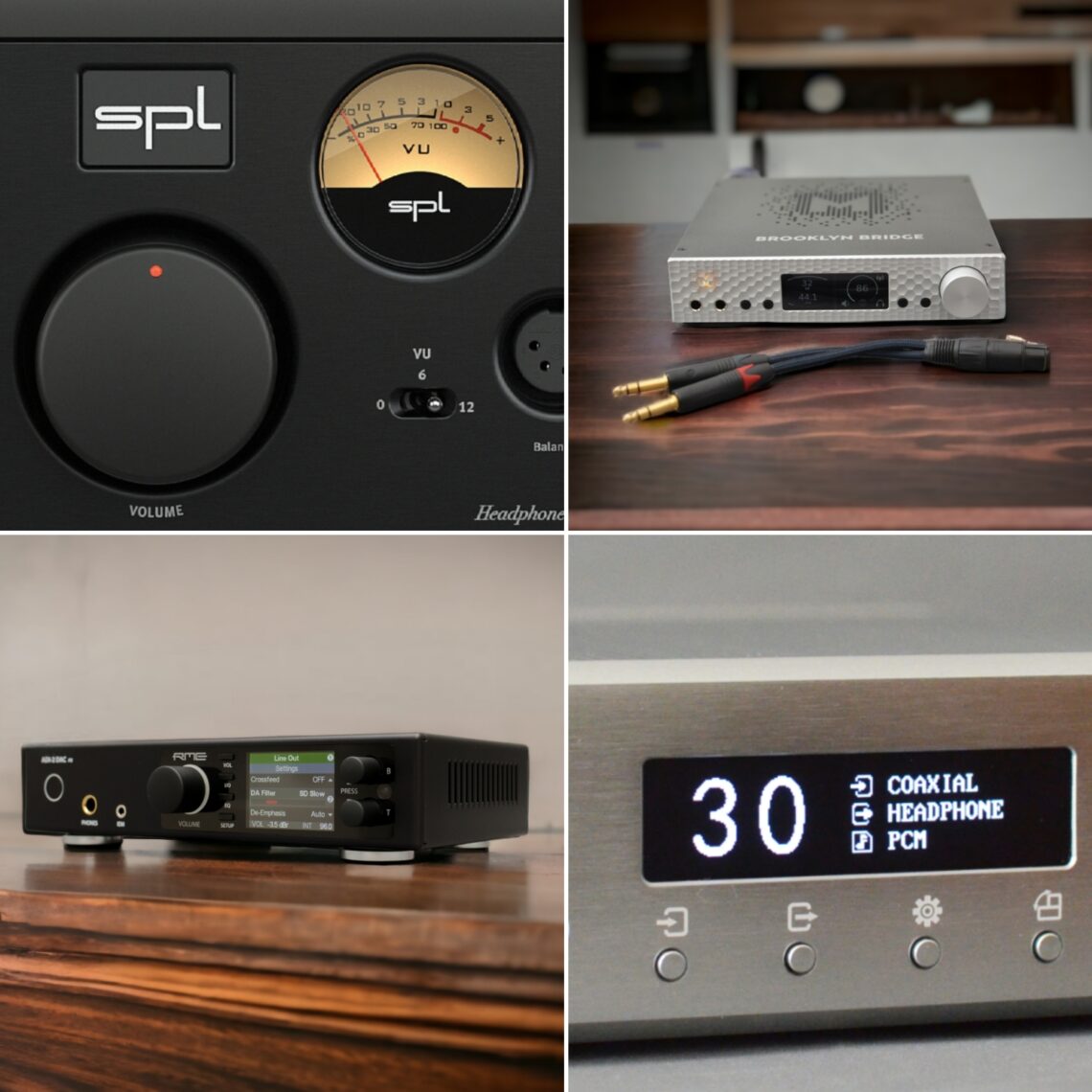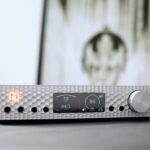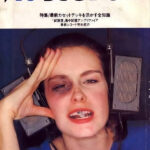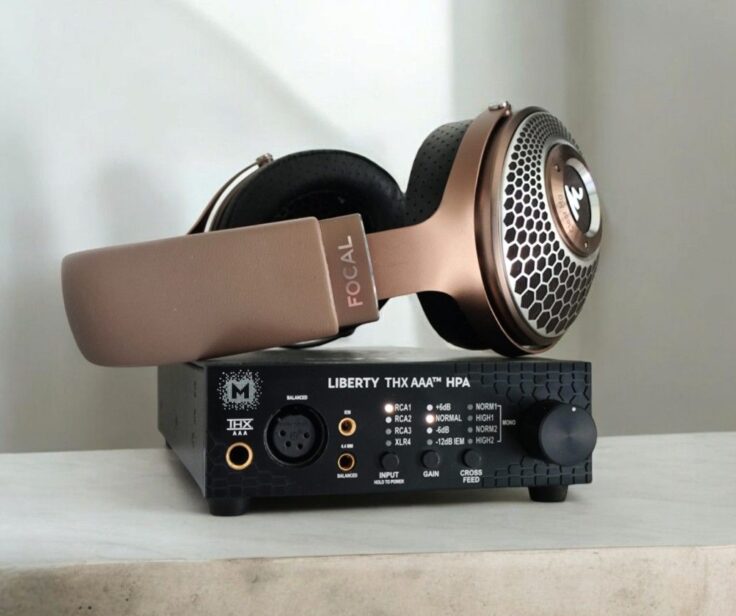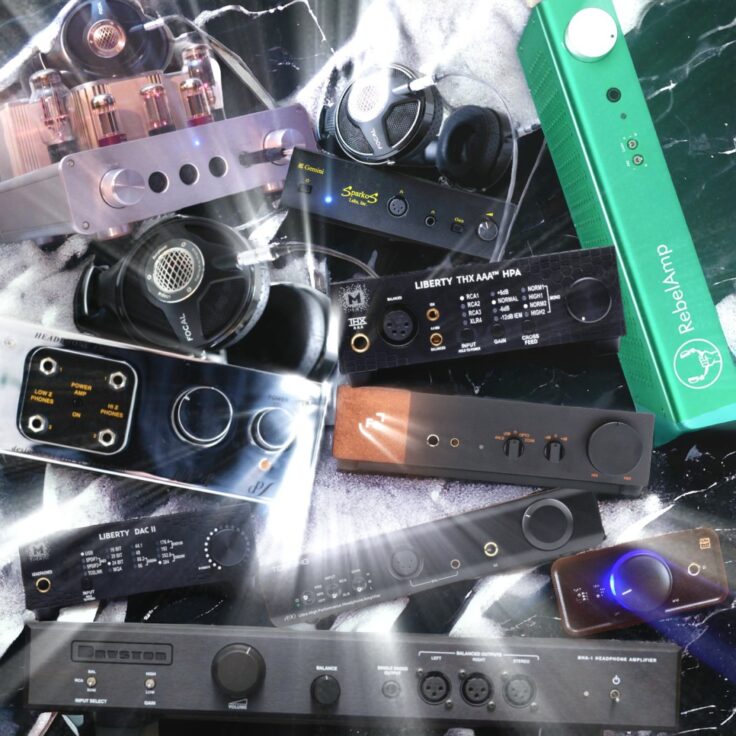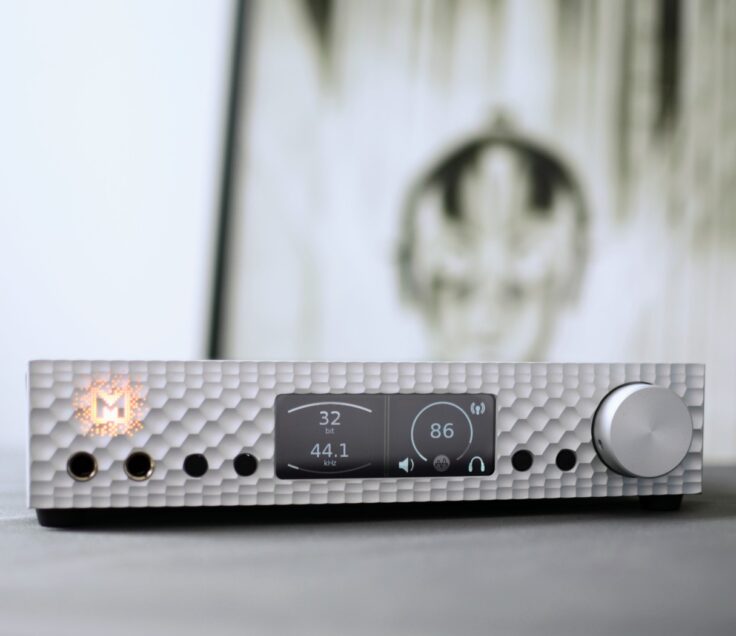This is a group test of the headphone performance as a standalone DAC/amp of the SPL Phonitor xe with the DAC768, the Burson Conductor 3 Reference, the Mytek Brooklyn Bridge/DAC+ and the RME ADI-2 DAC FS (V2 AKM DAC chip version).
I have written extensive reviews of all four units. There are links to those reviews at the end of this article. Mostly, these impressions have been posted in the respective reviews, but not all.
For the performance of the pure DAC performance of the respective DAC/amps, I refer to the standalone reviews. There I also compare them to other DACs and dedicated headphone amplifiers.
This page is supported by users when they donate or use affiliate links to shop for anything on Amazon via our link here .
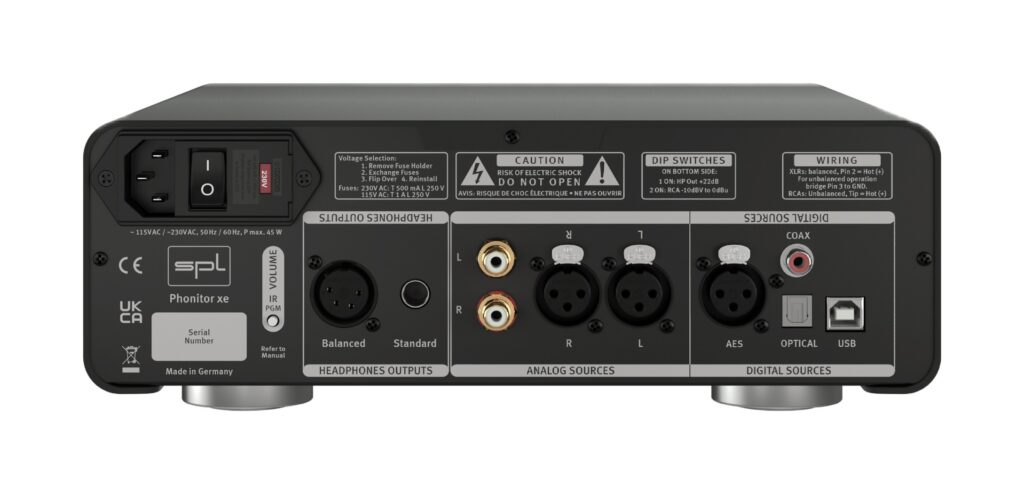
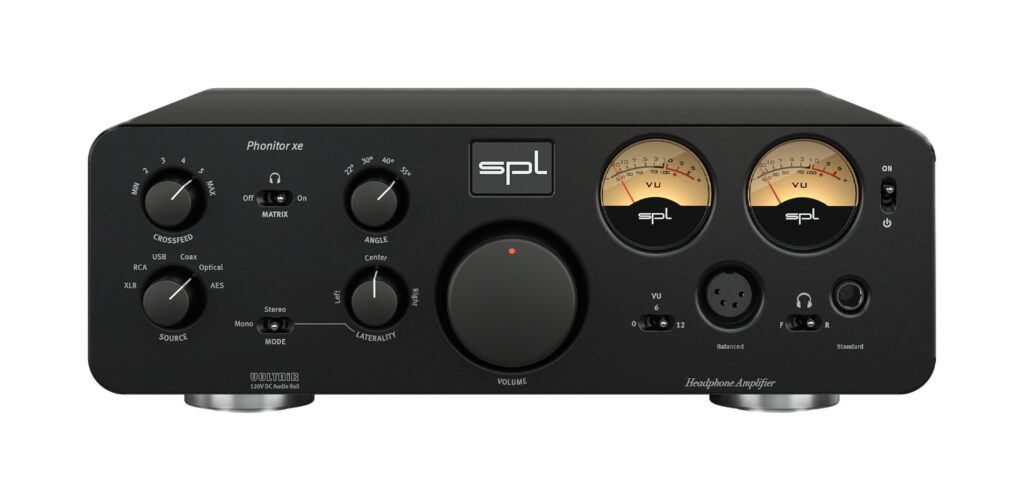
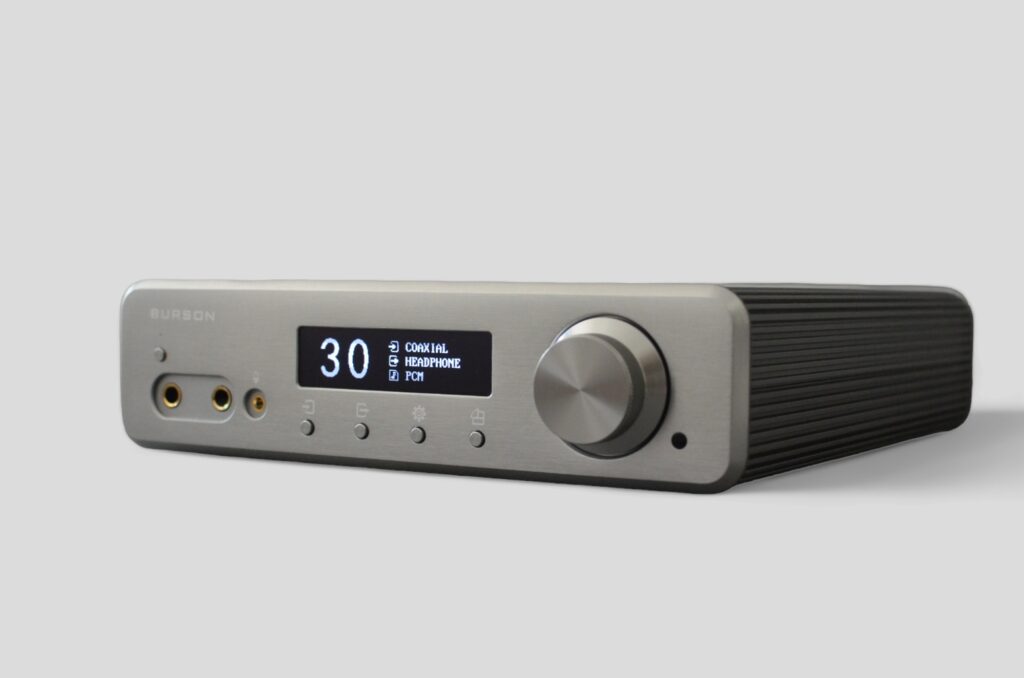
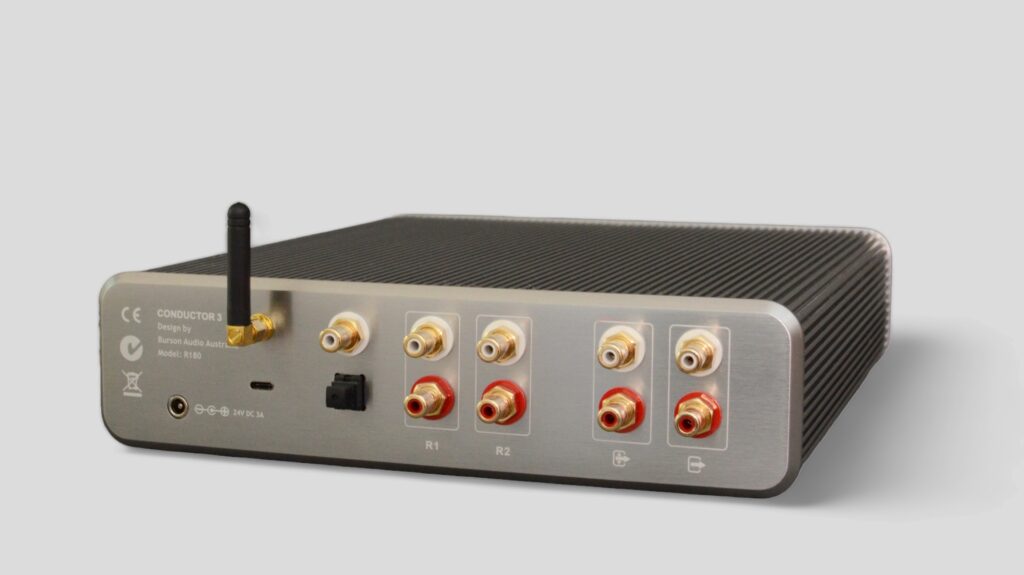
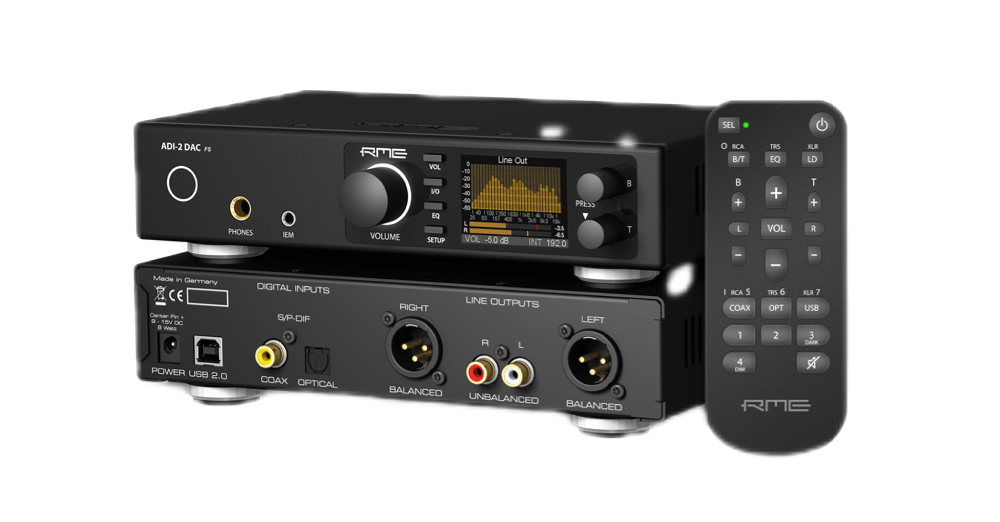
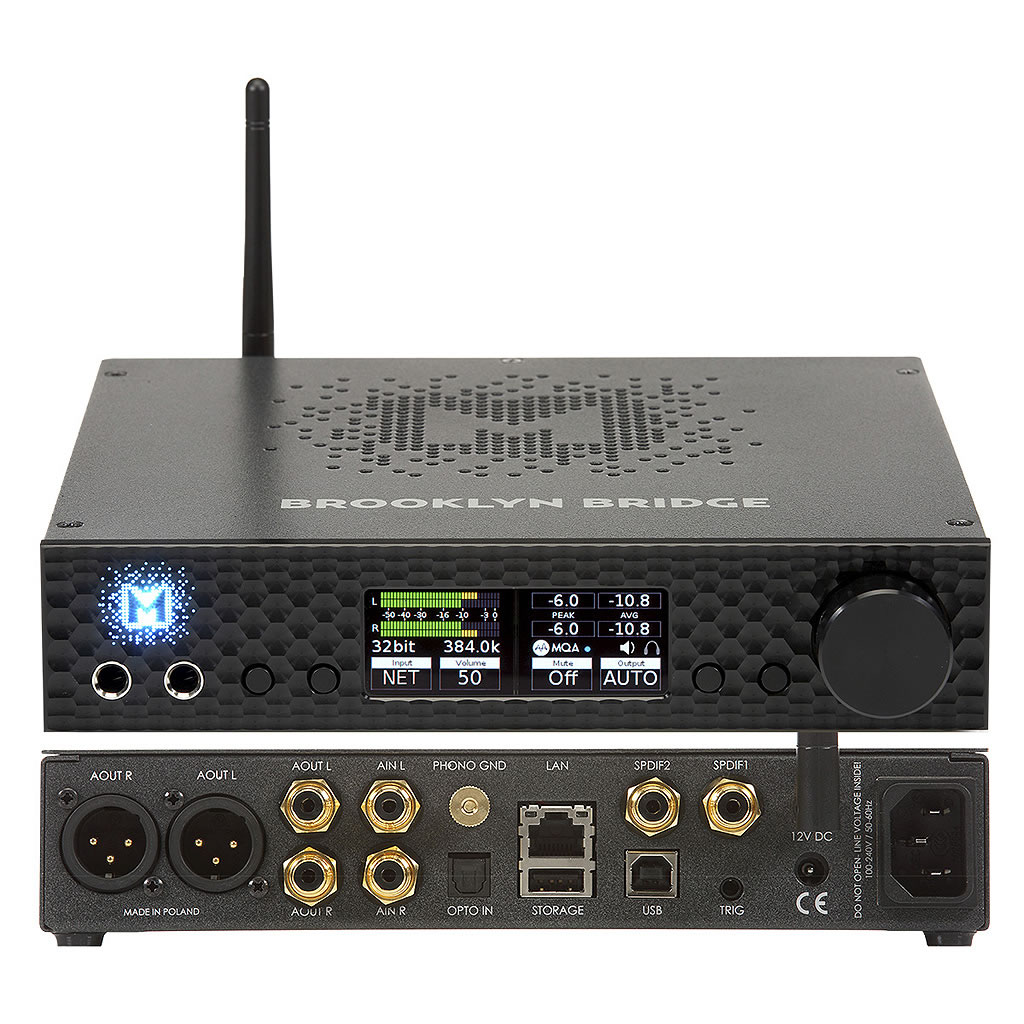
FUNCTIONALITY
Concerning features, they all have their different pros and cons.
The Phonitor has an advanced crossfeed matrix system and multiple headphone outputs both on the front and the back. It has two analog and four digital inputs. It does, however, not have a line output and thus cannot be used as a pre-amplifier. The volume pot can be programmed to work with any IR remote control, but none is supplied.
The RME has a lot of functionality including EQ, but no analog inputs. It comes with a very useful remote control with lots of direct selection buttons.
The Mytek Bridge/DAC+ has a set of analogue inputs that can even be set up so that it can work as a phono stage for a turntable. There are two analog outputs. It comes with an Apple remote.
The Bridge has a streamer module and great integration with Roon.
The Burson has two analogue outputs and analog inputs. It has double TRS headphone outputs. It can be placed vertically. It comes with a basic remote.
All in all these units are very capable and if one of them fits your needs in terms of functionality and budget, the difference in sound quality might not be big enough to make you sacrifice that functionality. Again I recommend you to read the respective reviews I have written on all four units for more information and recommendation
The Phonitor, ADI-2 and Conductor 3R are still going strong after several years on the market. The Brooklyn Bridge and Brooklyn DAC+ are unfortunately discontinued. Mytek has chosen to strip down on the choices and the only Brooklyn available new is the Mytek Brooklyn Bridge 2, which is not only equipped with a streamer module but a Roon Core computer. The price, however, is very high. Luckily, there will be Brooklyns on the 2nd market for years to come.
COMPARISONS
Here are the comparisons made in this article listed. Most of them are two at a time but sometimes I threw in a third:
- Phonitor vs ADI-2
- Phonitor vs Conductor
- Phonitor vs Brooklyn
- Conductor vs ADI-2
- Conductor vs Brooklyn
- Brooklyn vs ADI-2 (and Phonitor)
- BONUS
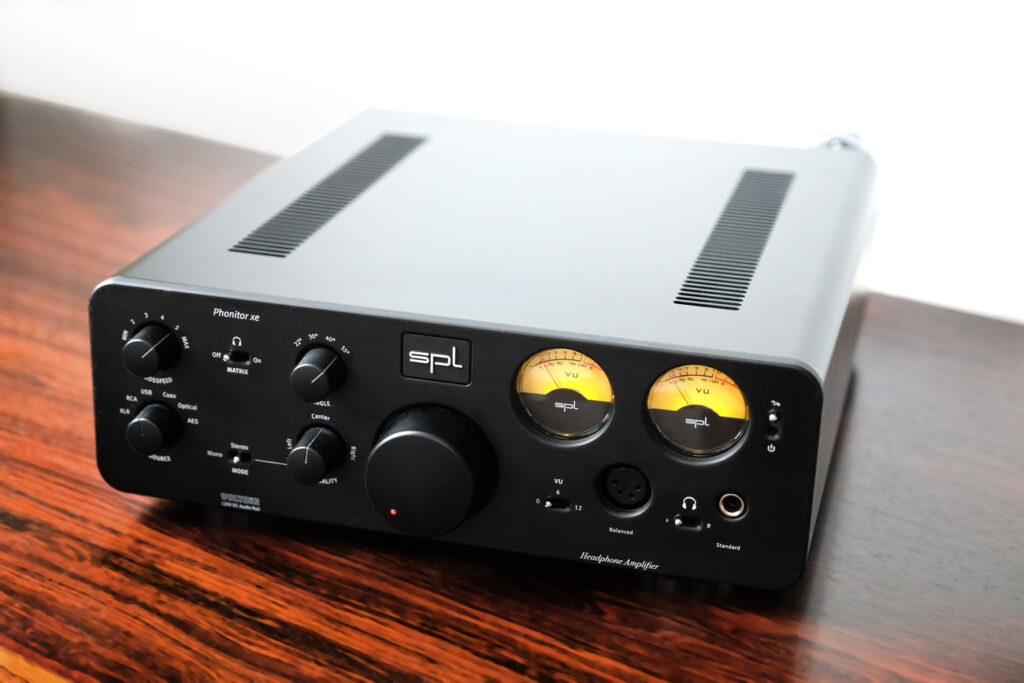
1 – PHONITOR xe vs RME ADI-2 FS
I will use both internal DACs. RME ADI-2 DAC FS v2 (AKM) is inherently unbalanced and I will only compare it to the more powerful balanced output of the Phonitor xe.
Audeze LCD-3: The Phonitor has better dynamics and more headroom; it also feels a bit warmer and fuller in the midrange.
Sennheiser HD700: The Phonitor drives the HD700 beautifully. Spacious and dynamic, with a nice hint of warmth. The RME does a good job, but the Phonitor is, simply put, more organic sounding.
Sennheiser HD800: Also here, the Phonitor does a better job, with a bigger margin than above. The RME is good but sounds less coherent, less organic, and a bit more brittle.
Further, the Shure SRH-1840, Beyerdynamic T1mk2, and Hifiman HE1000v2 all sounded better with the Phonitor in unbalanced mode, and the difference is even more significant with the balanced output.
All in all, given that you utilize the balanced outputs, the Phonitor xe is indeed several steps up as a DAC/Amp compared to the already capable RME ADI-2.
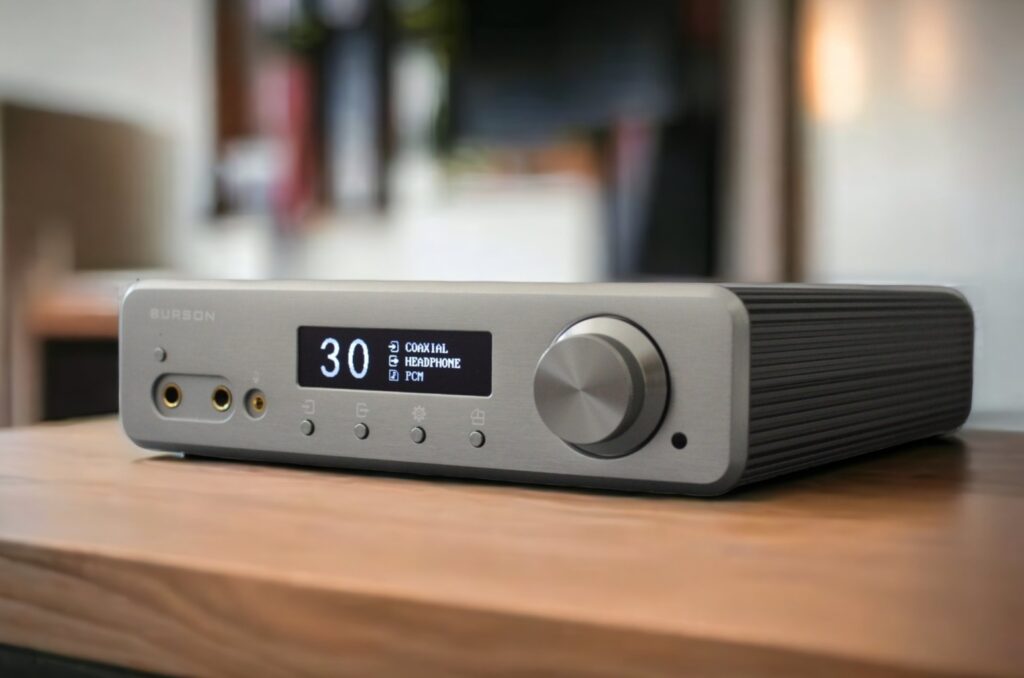
2 – PHONITOR xe vs BURSON CONDUCTOR 3 REFERENCE
In this comparison, I use the Internal DACs of both units. The Conductor 3R has an unbalanced output only, but I compare it to both the outputs of the Phonitor.
HD800 Unbalanced, they are very similar, but the Phonitor is slightly more present in the midrange. The Burson might have the best bass performance and offers a slightly more open soundstage, maybe a bit more refined sounding. With the Phonitor balanced, it tightens up slightly and feels more transparent, still retaining that extra midrange presence. Basically, in unbalanced mode, they perform very evenly, but when using the XLR output, the Phonitor is the better amp.
Beyerdynamic T1 With the balanced output, the Phonitor is the better sounding with the T1. The Burson gets a tad dry sounding, not as open, detailed, and organic. It is good, but the Phonitor is better. Moving over to the less powerful unbalanced output of the Phonitor, it evens out.
Shure SRH-1840 The Phonitor is an excellent match for the SRH-1840. With its balanced output, it clearly gets the upper hand due to better dynamics, clarity, and precision. Going unbalanced, they get a lot more even.
Hifiman HE1000 mk2 Both sound good, but it must be said that few amps do these headphones full justice, and the balanced outputs of the Phonitor are closer to releasing the HE1000´s full potential than the Burson. Unbalanced, they are on a similar level, but going balanced, the Phonitor definitely gets closer to showing what these headphones can do when properly matched.
LCD-3 Both amps are great. Compared to the Phonitors’ unbalanced output, I prefer the Burson. It’s slightly tighter, clearer, and crisper. Using the balanced XLR output of the Phonitor, however, the table flips, and the Phonitor gets slightly tighter and offers a bit more headroom than the Burson.
Fostex TH-900 (unbalanced only) The Burson, even in low power mode, is simply too noisy for these extremely sensitive (for full-size) headphones. The Phonitor is so quiet even in High Power mode that I don’t even bother to try it in low mode, at least for now – given the extremely awkwardly positioned switch.
Hifiman HE-6 Even though the extremely hard-to-drive HE-6 is somewhat of a curiosity, it is always interesting to see how an amplifier handles them. Both these amps handle the HE-6 totally acceptably. These have enough power to make the HE-6 sound good. However, neither quite matches the level of dynamics and PRaT you can get with a good speaker amp. They are in the same territory as the standard edition Audio-gd Master 9, which I consider the reference for “acceptable” performance. The Phonitor has a bit more headroom and dynamics than the Burson.
LCD-X and Focal Elear (unbalanced only) The Phonitor has a slightly meatier presentation, and to me, it sounds delicious. The Conductor is not sterile or clinical by any means but feels a bit more polite. It has great detail and spaciousness but not the same full bodied feeling.
Concluding, both these amps are great. With the unbalanced outputs, it is often a toss-up. The Phonitor is a bit fuller and meatier sounding, the Burson a bit more refined and polite. Going balanced, however, the Phonitor clears up and generally offers more dynamics and clarity – while still retaining a hint of that “meat to the bone” fullness.
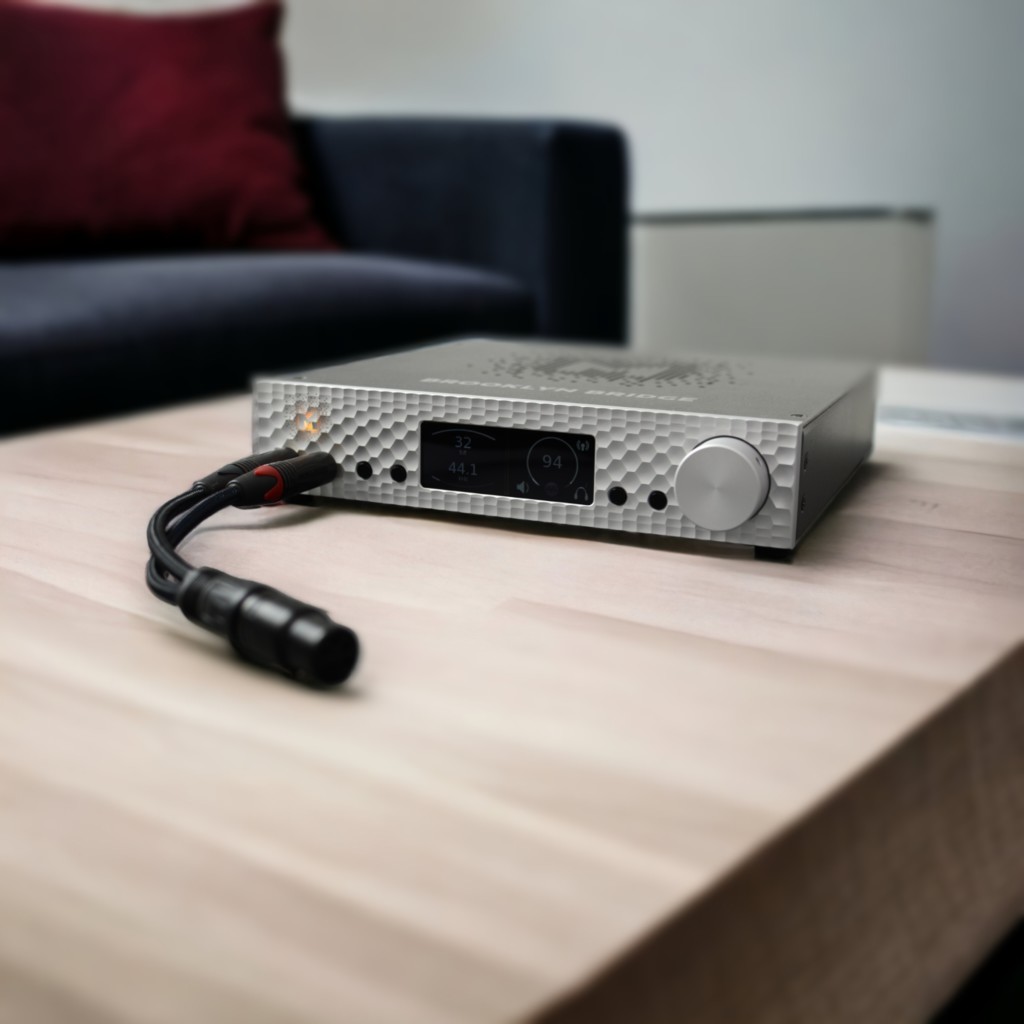
3 – PHONITOR xe vs MYTEK BROOKLYN BRIDGE / BROOKLYN DAC+
The Mytek Bridge is simply a Mytek DAC+ with a built-in network streamer. They both can be used in balanced mode. It requires an adapter that uses the dual TRS output and combines them so that each power one channel only. In this comparison, I compare the Phonitor´s unbalanced output to the Mytek’s unbalanced output and the Phonitor´s balanced output to the Mytek with the balanced adapter. I use the internal DACs.
HD800 Both DAC/amps do a very good job. Unbalanced, the Mytek is a bit sharper sounding. The Phonitor has more meat and body to its presentation. Going balanced, both tighten up and gets better, with a clearer and more articulated sound presentation. The Mytek is still a bit drier and less organic sounding, though, and I still prefer the Phonitor.
Beyerdynamic T1 mk2 Listening to Leonard Cohen’s “The Hills”, in the more powerful balanced configuration, the Phonitor has a more midrange body. Generally, the Mytek feels a bit sharper, and the Phonitor keeps that treble softer and more pleasant to the ear. Both do a great job, but I prefer the Phonitor. Unbalanced, both amps sound a bit softer and slightly muffled. They are still great, though, and I even might prefer the Mytek unbalanced, it helps soften the treble “bite” of the T1 a bit.
Shure SRH-1840 With the balanced output, they both are wonderful with the SRH-1840; detailed and dynamic. The Phonitor offers slightly more body, especially in the midrange, but they are not very different. Unbalanced, I basically find that the difference between them remains the same, but both lose slightly in terms of dynamics and headroom.
Hifiman HE1000mk2 Unbalanced, they perform similarly decently, but not optimally. The Phonitor is a bit warmer and thicker sounding. Moving on to the balanced output, the Phonitor stays with a slight extra dose of warmth, but both are definitely more in control of the quite demanding HE1000mk2.
LCD-3 Balanced, both are clear and crisp, but the Phonitor has that extra dose of midrange presence. It is just sweeter sounding, without losing any perceived detail. Going unbalanced, they both lose a bit of headroom, but the relative difference remains the same.
Concluding, these are both great DAC/Amps. Generally, unbalanced, the Mytek Bridge/DAC+ is a bit crisper and sharper sounding, and the Phonitor is a bit warmer and cosier sounding. When going balanced, they both seem to get more in control of the headphones: The Phonitor becomes cleaner and crisper, the Mytek a bit less sharp around the edges and more organic sounding. There is no doubt that the balanced modes of these amps make a big difference.
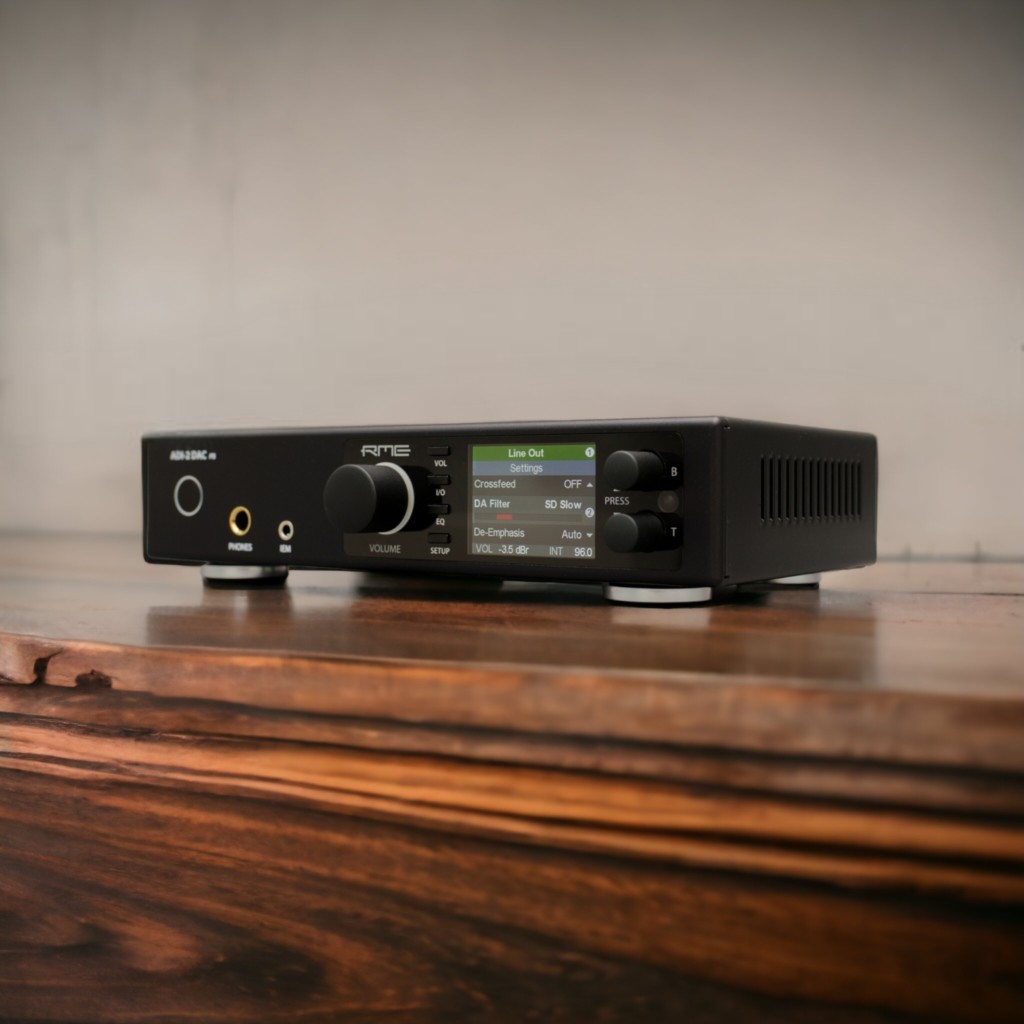
4 – BURSON CONDUCTOR 3 REFERENCE vs RME ADI-2 DAC FS
Internal DACs
Although both are pretty good with the Sennheiser HD800, I find the Burson a bit more well-rounded and spacious and slightly more organic sounding. In Cohen’s “What Happens to the Heart”, the small background sounds stand out just a little bit more, and there is a bit more fine detail (plankton). The difference is there, but not huge.
Also with the Audeze LCD-3, the Burson is smoother, more spacious and natural sounding. The RME is ok, but it’s not as delicious. Using the Shure SRH-1840, both sound great and clean, punchy and energetic. What sets them most apart is that little extra sweetness of the Burson, that extra hint of that golden tone with violins and electric jazz guitars.
The RME has the power to drive the Hifiman HE-1000 but not with the refinement of the Burson
With the Beyerdynamic T1, the RME gets quite on the dry side. The Burson has a warmer and more liquid presentation.
In conclusion, to me, the Burson Conductor is a better headphone DAC/amp than the RME ADI-2 DAC FS. It is a bit warmer and smoother and has overall a better sense of refinement.
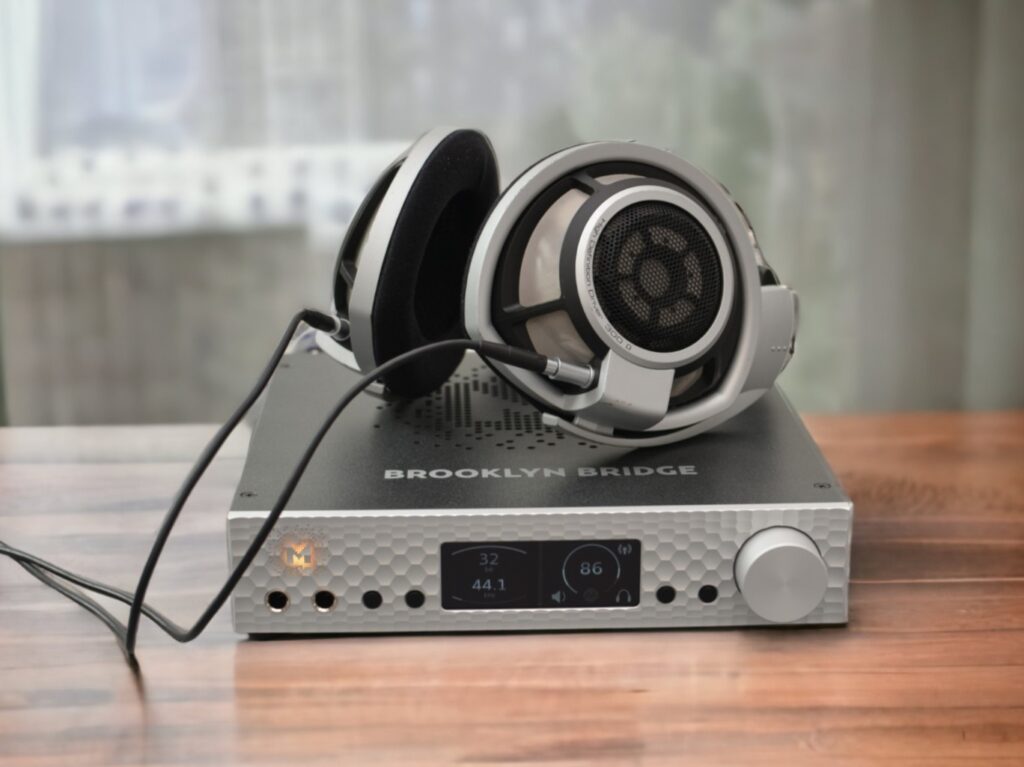
5- BURSON CONDUCTOR 3 R vs MYTEK BRIDGE
With LCD-3 the Burson is slightly more rounded and organic and natural sounding even though the Mytek (balanced) really does a good job. Switching over to the HD800, it becomes apparent that although they often sound quite similar, the Burson does indeed have a sweeter tonality, with electric jazz guitars and such, it has a better ability to convey that tubey glow. Moving on to the SRH-1840, the difference remains the same. Both drive these headphones very well, but the Burson has that slight extra glow.
The HE-1000 sounds smoother, more organic and refined with the Burson. The Bridge (balanced) is very good, it’s dynamic and spacious but feels a bit drier. It’s a matter of preference, maybe.
With the Beyerdynamic T1 (balanced), I find the Burson a bit more pleasing. Both drive these headphones well, but the extra bit of sweetness from the Burson does the T1 well.
Starting out with the Grand Central by Thomas Stanko on the Focal Elear (unbalanced), I feel that the Burson is a bit more alive. The trumpet is slightly more organic, the percussion stands out a boy more. Simply put the Mytek seems to be a little bit flatter sounding with the Elear. It’s still good, the Burson is just a bit better.
The LCD-X (unbalanced) is good on both, but I tend to find the Burson a tad more organic sounding.
Finally, the Oppo PM1 sounds delicious with the Burson. Erland Dahlen’s “Clocks” is powerful, smooth, lively and inviting. The bass is solid, the bells are very natural sounding. In direct comparison, there is a little something lost when moving over to the Mytek (balanced). It sounds good by itself, but in direct comparison, the music becomes flatter sounding. The bells are less alive. To quote Currawong: “Comparison is evil”. This impression remains the same with other songs. The Mytek is totally enjoyable by itself, but the Burson is my favorite.
6 – MYTEK BROOKLYN BRIDGE VS RME ADI-2 DAC FS VS PHONITOR xe
I sometimes used the balanced outputs of both the Brooklyn and three Phonitor. The RME is always unbalanced by design. I indicate where I use balanced or unbalanced outputs on the Mytek and the Phonitor in the text
Sennheiser HD800 balanced
Starting out with some Bach Cello Concerts, the ADI-2 and Brooklyn are not dissimilar, and both are very good. I feel Mytek is a bit cleaner. They do not offer the warmth and fullness of my most cherished HD800 amps, and comparing them to what happens to be one of them, the Phonitor xe, it is obvious my memory isn’t failing me: The Phonitor does sound better.
Moving on to more experimental music, (In Touch – Yves Robert et.al.) ADI-2 and Brooklyn are again very similar. They share the same clean, but slightly analytical presentation. Compared to the Phonitor, they lack some warmth and fullness but also some sense of image depth.
With “There, There” by Radiohead, the ADI-2 is a bit softer, I notice Thome Yorke’s vocals having a bit more raspiness and edge with the Brooklyn. Compared to the Phonitor, again, they both fall a bit short.
All in all, the ADI-2 and Brooklyn have more in common than what separates them. I do find the Brooklyn a tiny bit clearer, but on the other hand, the HD800 can happily accept some EQ-ing, and that is something the ADI-2 does offer in-house.
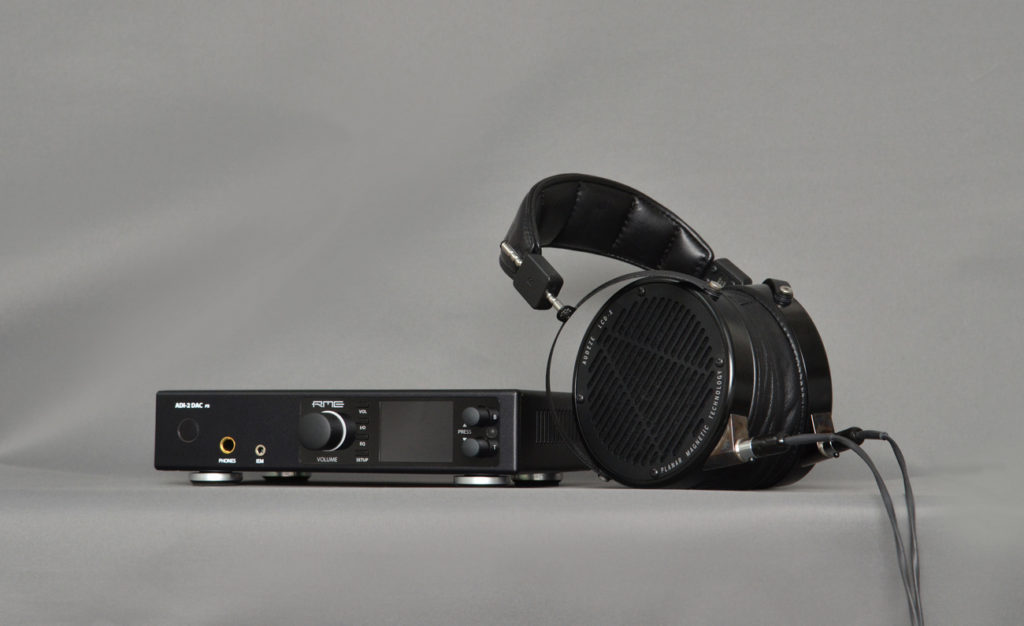
Hifiman Sundara unbalanced
Also with the Sundara, I find the difference small but the Brooklyn is still slightly crisper and clearer than the ADI-2. And as with the HD800, moving to the Phonitor makes a positive difference, especially with regards to the sense of body, openness and just a more pleasing and organic feeling.
Sennheiser HD650 and HD660S unbalanced
Brooklyn and ADI-2 again sound quite similar with the HD650, both are great. The Phonitor is even better. The HD660S gives the same result.
Hifiman HE1000v2 balanced
The Brooklyn is surprisingly good with the HE1000v2. Really great. Almost as good as the Phonitor. The HE1000v2 is a hard headphone to drive properly, but the Mytek does a great job indeed. The ADI-2 is not bad, but a bit less exciting and bold sounding than the other two.
LCD-3 balanced
Driving the LCD-3 is a much more even game. The Brooklyn and the Phonitor are quite similar, the ADI-2 is still good but a tad flatter sounding, lacking a bit of presence in the mid-range – at least in comparison.
Fostex TH900 unbalanced
The Brooklyn does have a very slight background hiss with these cans, but a lot less than I remember the predecessor had, and it is absolutely listenable. Other than that, they sound great. The ADI-2 has a similar hiss when “Hi-Power” mode is on, but not when it is disabled. That being said, I do prefer the Mytek, despite the slight hiss. It is more dynamic and lively sounding. The Phonitor has no hiss and is better than both.
All in all, both the ADI-2 and the Brooklyn Bridge/DAC+ have excellent headphone amplifier sections. They present lots of detail and authority. Often, they perform similarly well, but when one of them stands out, it is the Brooklyn. It is a bit more punchy and has livelier mids. Both have lots of power and offer a spacious and detailed presentation. The Phonitor xe, however, often seems to give me a better headphone experience. It is not about it being more detailed, it’s about the way it presents the flesh and soul of the music.
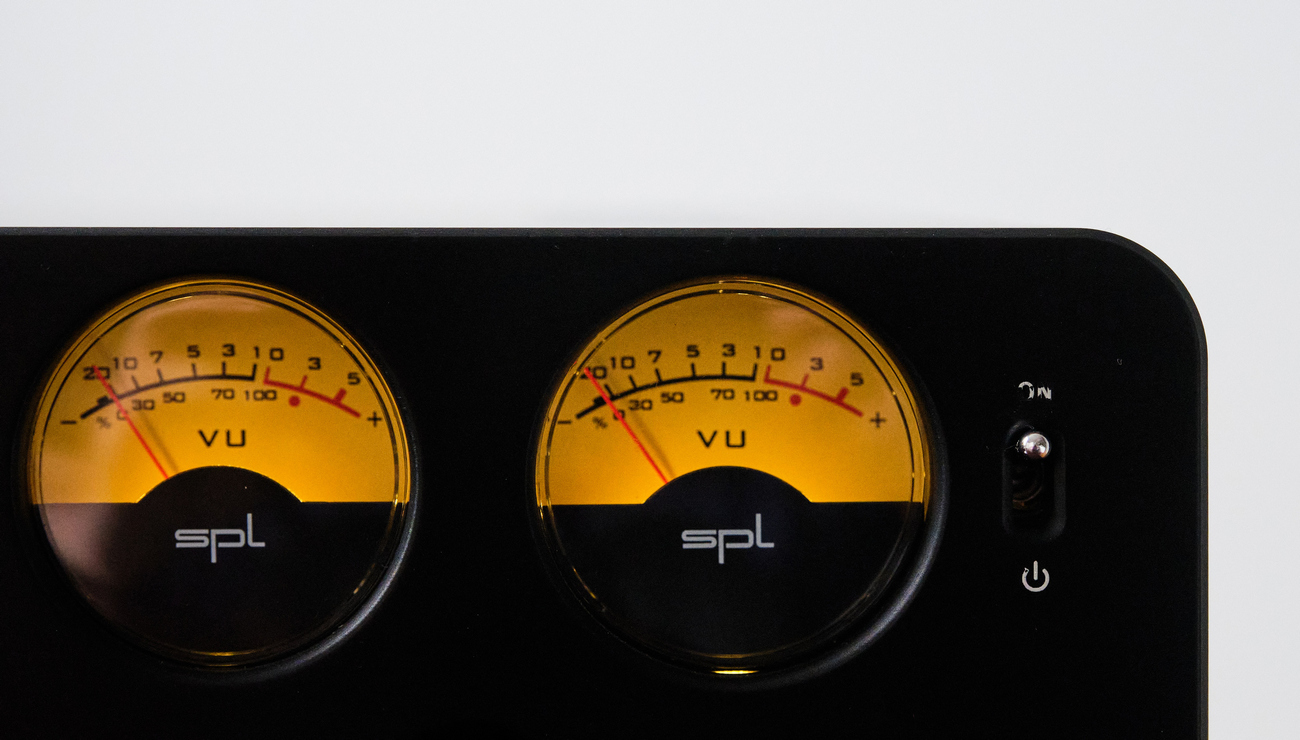
7 – BONUS: PHONITOR xe vs BURSON CONDUCTOR 3 REFERENCE vs MYTEK BROOKLYN BRIDGE AND BROOKLYN DAC+
I did an extra round of comparisons with these three units. Where I have noted “balanced” I used the balanced mode with the Phonitor and the Brooklyn (via adapter)
Focal Elear / Focal Elex (unbalanced)
The Phonitor is a bit warmer and fuller. Even though all do a great job, the Phonitor gives a more full-bodied experience. I find the Conductor to present an airier image, Brooklyn is maybe the most snappy sounding of the three. All in all, I prefer the Phonitor over the Conductor. The Bridge is somewhere in between. Perceived detail is comparable with that of the built-in DACs – which makes the Brooklyn dig out a bit more while the other two are on the same level, yet still very good.
Audeze LCD-X (unbalanced)
Playing Erlend Dahlen´s album Clocks, I notice a similar difference as with the Elear. The Phonitor has that meaty feeling, and to me, it is just delicious. The Conductor is more smooth and polite, it has great detail and spaciousness but not that same full-bodied presentation. The Brooklyn comes off in between but has some low-level background noise.
Sennheiser HD800 (balanced)
Medeski, Martin and Wood – End of the World Party: The immediate impression is that the Phonitor is more rounded, and the treble is less offensive than with the Burson. The Brooklyn is again the middle ground, slightly less on the dry side. Neither feels bright, and neither is harsh. I would say the Phonitor is the most different one.
Eminem – Music to be Murdered by: I find that the Burson does seem to have better bass control than the other two amps, something I have noticed before, the bass is more satisfying with the Burson than the others. It feels tighter and more textured, without feeling dry or holding back.
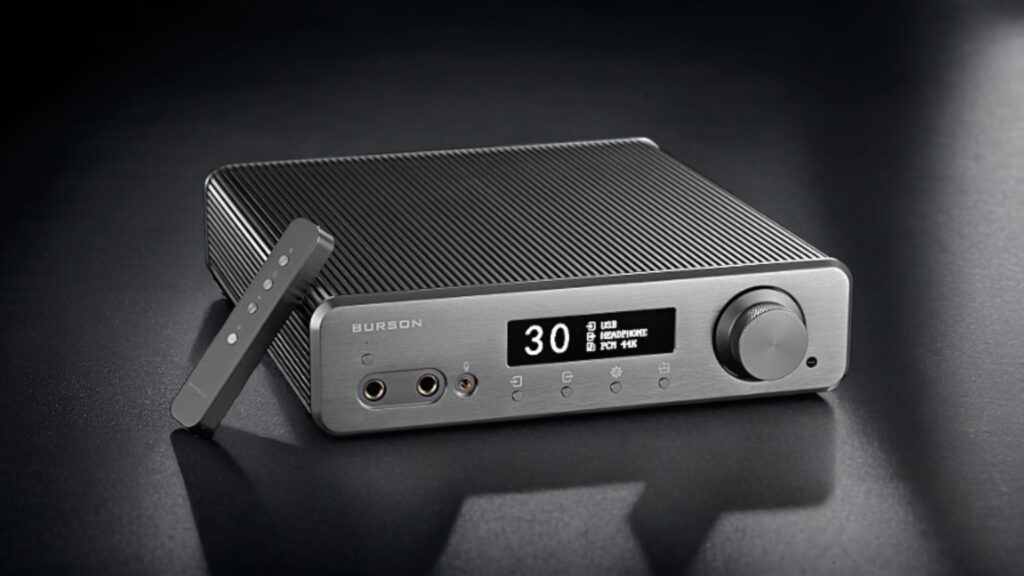
Katie Meluha – I´d love to kill you: When comparing the Phonitor to the Burson, the Phonitor is warmer and more velvety. Both are very nice, though. The Brooklyn holds up too, again somewhere in between.
Sheppard/Parricelli/Aarset – Movements in Colour: There´s no doubt that the Phonitor is the more different of the three. The warmth and body it presents are quite special for such a detailed-sounding amp. It does, however, I often feel like the two others offer more detail, albeit with a slightly thinner sound signature, but the Phonitor isn’t hiding anything. The Burson often seems to offer a slightly more open soundstage, though. The Brooklyn also feels quite open and wide sounding.
Thor II – Kappeler/Zumthor: This slow acoustic piece reveals some extra treble resolution on behalf of the Mytek. It might be the DAC that is holding the other two amps back in ultimate resolution, anyway the bells at the end are just so perfectly rendered with the Brooklyn.
To conclude on the HD800, I find all three amps to be very nice. The Burson might have the best bass performance, and the Mytek might shine a little nicer in the top region, but the Phonitor has that full-bodied tonality I just adore.
Beyerdynamic T1 mk2 (balanced)
Movements in Colour. Shepard/Paricelli/Aarset: First, all three are doing the T1mk2 full justice. There are, however, some clear differences in the presentation. Comparing the Phonitor and the Burson, as I have come to expect, the Phonitor has that slightly meatier presentation, the Burson is a bit tighter and airier. Again, the Brooklyn seems to be in between in sound signature, while at the same time also feeling cleaner.
Fostex TH900 (unbalanced)
Sadly, the Burson, even at low power mode, is simply too noisy for these extremely sensitive (for full-size) headphones. The former Mytek Brooklyn DAC mk1 was almost as bad, but the DAC+/Bridge version has gotten it under control. The Phonitor is so quiet even in High Power mode that I don´t even bother to try it in low mode, at least for now. The small dip switch is extremely awkwardly positioned in a hole in the chassis bottom plate. The Mytek´s “Hi Power Mode” comes in the form of a balanced cable adapter.
That being said both amps do a good job, but the Mytek feels snappier and generally clearer.
Sennheiser HD650 and HD660S (unbalanced)
Although the HD650 reveals the same sound signature differences as the previous headphones, I prefer the Brooklyn. Maybe it’s the clarity. The Burson is a bit flat sounding in direct comparison, the Phonitor a bit thicker sounding.
Hifiman HE6 (balanced)
Even though the extremely hard-to-drive HE-6 is somewhat of a curiosity, it is always interesting to see how an amplifier handles them. All three amps manage to drive the HE-6 beyond normal listening levels, but as with all amplifiers, that is not enough. They cannot give the HE-6 the dynamics and headroom it is capable of. They sound totally OK, but I would never recommend the combination. To my surprise, the Mytek (with a balanced adapter) is actually the best sounding, with more dynamics and significantly better clarity and articulation than the other two – it is actually just good enough for me to think it would be worth hanging onto the HE-6 if I was stuck with the Mytek as my only amplifier. That’s impressive since most dedicated headphone amplifiers are far away from achieving that.
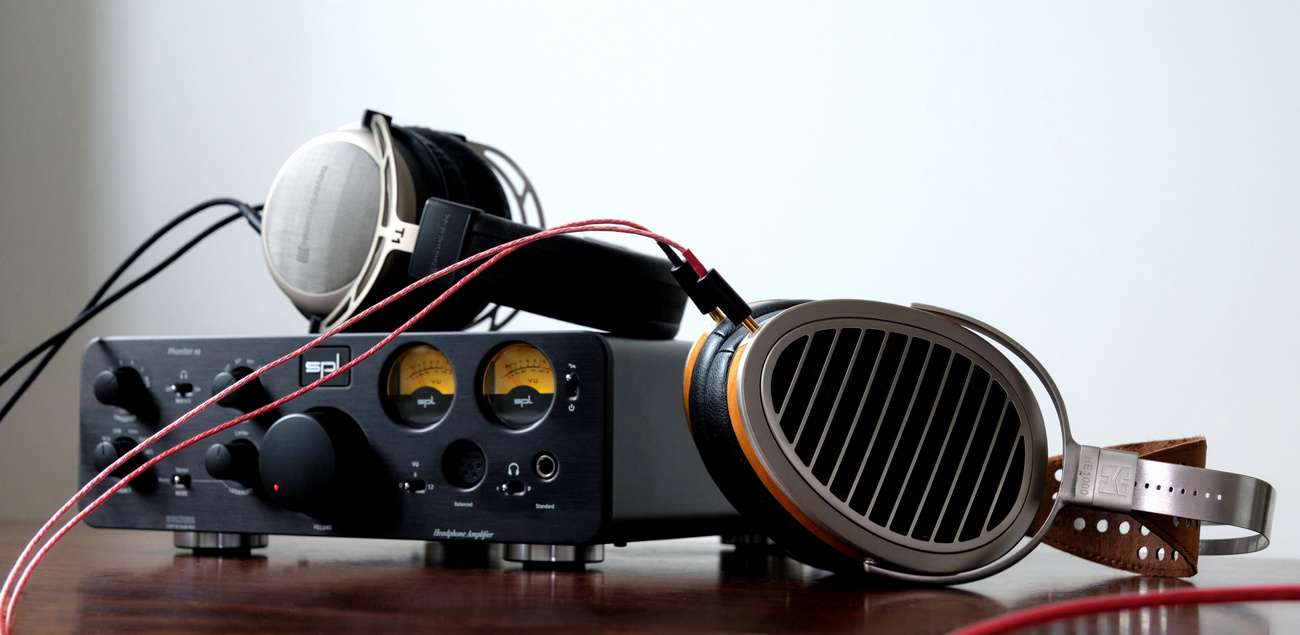
OVERALL CONCLUSION
As standalone units for headphone listening, it is clear that all four DAC/amps are very capable. All are enjoyable, all present the music with lots of detail, space and punch. I find that they do have quite consistent traits, however. The Phonitor is warmer and full-bodied, the Burson a bit more lush and sweet, yet very spacious, the Brooklyn is powerful detailed and clean, the RME is straightforward, much like Brooklyn but not quite in the same level. However, which DAC/amp I prefer depends on the headphone. As always.
With regards to headphone performance as standalone DAC/amps, this is my order of preference:
1 – SPL Phonitor xe with the DAC768
2 – Burson Conductor 3 Reference
3 – Mytek Brooklyn Bridge / DAC+
4 – RME ADI-2 DAC FS
Concerning pure DAC performance, ref my separate reviews of the respective units, this is my order of preference:
1 – Mytek Brooklyn Bridge / DAC+
2 – RME ADI-2 DAC FS
3 – Burson Conductor 3 Reference and SPL Phonitor xe with the DAC768.
If you enjoyed this article or other content on The Headphoneer, you might consider leaving a small donation to keep this website up and running. No donation is too small. Thanks for supporting us!
If you like our work please follow us on Instagram, Facebook and Twitter , it will help us grow. Sharing is caring 🙂
Here are the links to my standalone reviews of the four great-performing units discussed in this article:
Mytek Brooklyn Bridge and DAC+ review
Burson Conductor 3 Reference review


